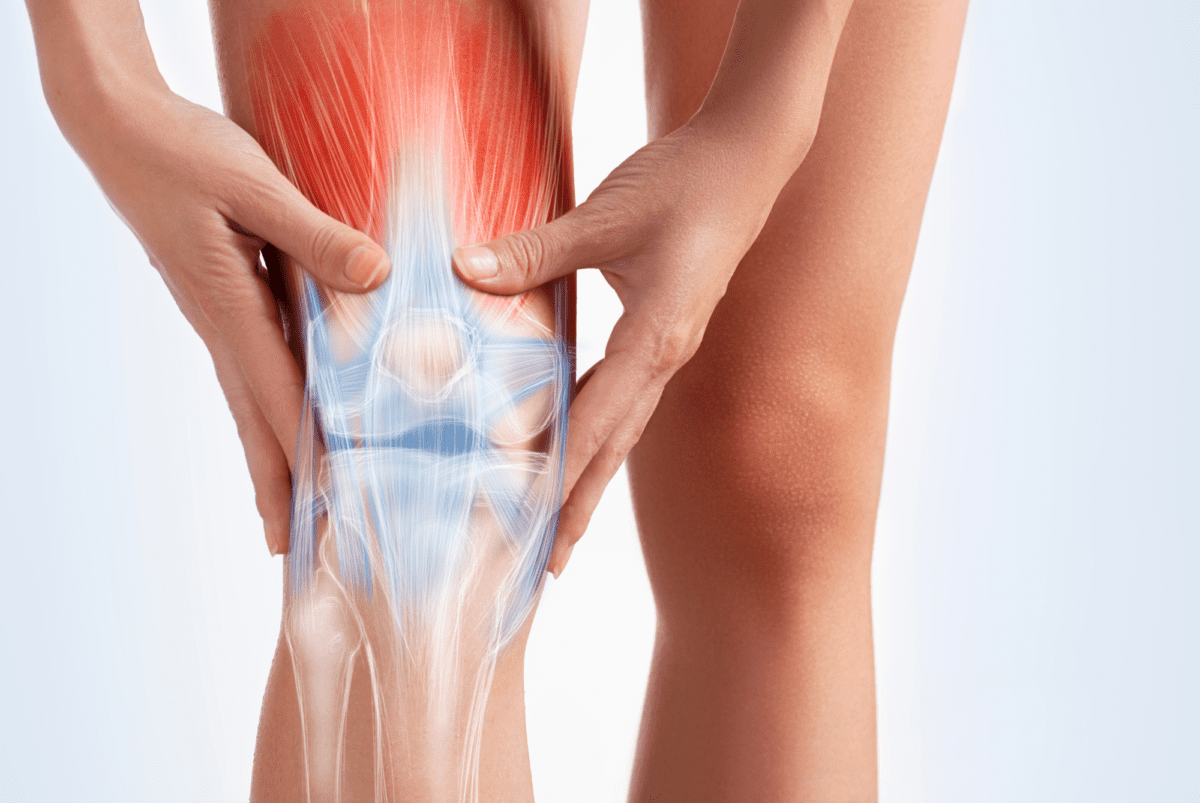Come and join Ben, every Friday morning in Robina for a two hour walking program, delivered in conjunction with Gold Coast Health to support the community with a monitored exercise routine.
Health Blog and Podcasts
Zac discusses osteoporosis causes, symptoms and treatment.
Falling pregnant is an exciting time, but it can also open the door to a wave of new worries. Your body is going through a lot of change, and suddenly there is a whole list of do’s and don’ts to inform your daily habits.
Exercise in pregnancy is a confusing concept for many expectant mothers. Should you be exercising? What’s okay and what’s not? How does all this affect the baby?
Once, pregnant women were ordered on bed rest and told not to lift a thing. Fortunately, we now know this to be unnecessary as research points toward the benefits of exercise during pregnancy. In fact, the Australian Physical Activity and Sedentary Behaviour Guidelines for pregnancy are the same as those for non-pregnant adults.
However, that’s not to say that there won’t be certain precautions and modifications. Today we address your top questions on prenatal exercise.
What are the benefits of exercise during pregnancy?
Staying active during pregnancy can be highly beneficial for both you and your baby. Not only is it a great way to stave off boredom or restlessness, but it can also be a rewarding outlet for managing your mental health.
Benefits of exercising through pregnancy include:
- preparing the body for labour and recovery
- reducing back and pelvic pain
- lowering risk of incontinence
- bettering mental health, including a lower risk of postnatal depression
As your body undergoes many changes throughout pregnancy, it can trigger other conditions. Prenatal exercise programs have been shown to reduce the risk of developing conditions such as:
- Gestational diabetes
- Gestational hypertension
- Preeclampsia
- Excessive weight gain
The added bonus is that engaging in prenatal exercise classes can be a great way to meet new people going through a similar experience. Pregnancy, especially a first pregnancy, can be daunting and overwhelming. Exercise offers a chance to connect and destress while getting your body in the best possible state to welcome a new life.
What type of exercise is best during pregnancy?
The appropriate type of exercise for pregnant women will be different for every person. It will depend entirely on the exercise you were doing before falling pregnant. If you’re a gym goer 3-4 times a week, then this is perfectly fine to continue during pregnancy. If you’ve long been a runner, then keep at the tracks!
Over time, you’ll modify the exercises you’re doing and the intensity that they’re being performed based on the physical condition you’re in. The same goes for cyclists, yoga lovers, swimmers – whatever your typical medium of exercise may be.
If you’re someone who hasn’t exercised before, it is recommended that you start by doing some low intensity exercise, then slowly build up to the recommended amount. Prenatal pilates is a great place to start for pregnant women who haven’t exercised before. Prenatal pilates takes the gravity out of exercising, it’s lower impact, and uses a variation of movements. It incorporates strength training, aerobic training and stretching in a low impact environment.
The best prenatal exercises will depend on your own preference. Some of our favourites are:
- Strength training
- Pilates
- Yoga
- Hydrotherapy
- Walking
- Running
- Cycling
In a nutshell, when it comes to exercising through pregnancy, stick to what you know. Now is not the time to take up a running career or powerlifting for the first time.
Exercises to avoid during pregnancy
With all that being said, there are some movements that are best avoided during pregnancy. Be mindful of any sort of jumping or jarring activities. During pregnancy, the body releases hormones that loosen and relax your muscles, joints and ligaments to help the body stretch. This can make the body slightly more prone to injury. Care should be taken when stretching too, ensuring you do not go further than necessary.
Use common sense with activities that are going to be somewhat unsafe, in terms of fall risks and high impact. This might mean hanging up the snowboard or waterskis for a few months.
The Australian guidelines recommend avoiding activities that involve:
- High risk of falling or collision
- Intense straining while lifting
- Significant changes in pressure (such as sky diving or scuba diving)
How much should you exercise while pregnant?
Now that we’ve covered the ‘what’, let’s explore the ‘how much’. It’s true that too much of a good thing can equal a bad thing. But the good news is that the limit is far higher than we once thought.
The national guidelines suggest being active most days, preferably every day, to a weekly total of either:
- 2.5 to 5 hours of moderate-intensity physical activity
- 1.25 to 2.5 hours of vigorous-intensity physical activity
- an equivalent combination of moderate and vigorous activities.
The approach to exercising while pregnant can be viewed similarly to the approach to giving up alcohol; Before trying to fall pregnant, many women will give up alcohol to put their body in the best shape to welcome a new life. The same goes for exercising. We recommend getting your body into the best physical state that you can manage at that time. This gives your body the best chance to fall pregnant and have a healthy pregnancy while mitigating as many risks as possible.
If you still feel unconfident in your exercise routine or simply want an expert hand to guide you along the way, we are here to help.
Nicole, one of our qualified pre and post-natal coaches, explores the common issue of back pain during pregnancy.
Pelvic floor therapy is a technical term for an exercise program that aims to strengthen the muscles of the pelvic floor. Weakness in the pelvic floor can often be to blame for symptoms such as incontinence. Urinary incontinence affects almost 38% of Australian women and up to 10% of Australian men.
As one of Atkins’ exercise physiologists specialising in women’s health, I regularly work with patients to manage symptoms associated with weak pelvic floors. In today’s blog I’ll take you through what exactly the pelvic floor is, why it’s so important, and how you can introduce pelvic floor training into your daily routine.
What is your pelvic floor?
Your pelvic floor is like a hammock of muscles that sit between your pubic bone and your tailbone. The pelvic floor has several roles. It controls your urinary and bowel movements, and it’s essential for sexual function. Think of it as a support system for your bladder, your bowel and your uterus. To function efficiently, this hammock of muscles need to be able to contract, lift and hold, as well as relax.
What is pelvic floor therapy?
Pelvic floor therapy is a type of exercise therapy used in the rehabilitation and prehabilitation of the pelvic floor muscles. In a nutshell, it’s a collection of exercises we use to either prevent injury or dysfunction from occurring or relieve the symptoms associated with dysfunction. The main goal is to improve pelvic floor function through exercises, lifestyle modifications, and education.
What causes pelvic floor muscle weakness
Anyone can experience pelvic floor dysfunction – regardless of age, gender or genetics. However, certain groups are more likely to experience pelvic floor dysfunction. Conditions or events that may trigger a change in the pelvic floor include:
- Stress urinary incontinence
- Prolapse
- Hormone changes (such as menopause)
- Childbirth – particularly from prolonged labour
- Obesity
- Certain surgeries
- Heavy lifting
What are the benefits of pelvic floor therapy?
Training the muscles of the pelvic floor can be beneficial in both a preventative and a restorative sense. A strong pelvic floor can help increase the resilience of the muscles following pelvic surgery. It can also reduce the risk of developing incontinence or prolapse.
On the flip side, pelvic floor exercise therapy can help manage symptoms associated with the following:
- Urinary incontinence
- Stool Leakage
- Stool urgency and frequency
- Pelvic organ prolapse
- Abdominal pain
- Pregnancy pain
- Pelvic pain
- Polycystic ovarian syndrome (PCOS)
- Endometriosis
Who is pelvic floor physical therapy for?
Many of us neglect our pelvic floor muscles until something goes wrong – even I am guilty of this. But proactively training and strengthening the muscles of the pelvic floor is something people of all ages can benefit from.
I work with young gymnasts who are prone to stress incontinence, through to postmenopausal women who are adapting to the changes in their bodies. Pelvic floor physical therapy can be an effective treatment for:
- Patients who have recently undergone abdominal, prostate, or pelvic surgery
- Athletes who participate in sports that are prone to causing stress incontinence (gymnastics, athletics, dancing)
- Individuals with an overactive pelvic floor
- Post-menopausal women
- Prenatal and postpartum mothers
Men can benefit from pelvic floor therapy as well as women. The treatment is commonly misconceived as a women-only exercise. However, we often use pelvic floor training as a rehabilitation treatment plan following prostate cancer surgery.
How to strengthen the pelvic floor
The pelvic floor is actually considered part of your ‘core’. Many of us think of the core as another term for the abdominals. The core actually extends from the diaphragm to the pelvis and incorporates the abdominals, as well as the muscles of the pelvic floor and lower back. This is why many pelvic floor exercises may look and feel similar to exercises we typically associate with core strengthening.
It can be difficult to isolate and voluntarily contract and relax the pelvic floor at first. This movement is often referred to as a ‘kegel’ exercise. These exercises can be performed daily. Try the steps below to practice contracting and relaxing your pelvic floor:
- Start by lying on your back, with your knees bent and feet flat. Take a gentle inhale breath for 5 seconds, breathing into your tummy, and gently exhale for 5 seconds.
- Think of your pelvic floor like an elevator, with closing doors, a G floor, and1st floor.
- Start your pelvic floor contraction by ‘closing the elevator doors’ like you are trying to stop the flow of urine.
- Then, gently lift and contract the pelvic floor elevator up to the 1st floor.
- Now relax your pelvic floor, by letting it down back to the G floor, and allowing the doors to open.
- Repeat this up to ten times.
While Kegels are a highly effective form of physical therapy exercises for the pelvic floor, it’s important to recognise that they aren’t a one-trick fix. A pelvic floor strengthening plan should incorporate exercises that work the surrounding muscles. It’s important to not only strengthen the pelvic floor, but the muscles around it too. This includes the transverse abdominals, hip adductors and abductors, and glutes. These exercises can be incorporated as part of a strength training program, and can be performed up to three times per week.
Common exercises to strengthen these muscles, and in turn – the pelvic floor, include:
- Glute bridges
- Sit-to-stands
- Clamshells
- Bird dogs
- Dead bugs
Pelvic floor exercises for men and women are the same, despite the fact that they may be in response to different conditions.
An exercise physiologist can help prescribe you a personalised pelvic floor therapy plan, tailored to your needs. If you’re seeking long-term relief from pelvic floor troubles, the solution is just a consult away.
This article is a guest post written by The Feel Good Society. Get in contact with The Feel Good Society to get two valuable client resources: ‘Painful Periods Mini eGuide’ and ‘Happy Hormones Guide Book’.
When a cancer patient comes out better from what’s supposed to be the toughest time in their life, that’s what drives me the most.
Maxwell WilliamsCarlo interviews Maxwell on the importance and benefits of exercise for cancer patients on their rehabilitation journey.
Understand the symptoms & treatment for knee osteoarthritis and how it can help improve quality of life.
We interview co-founder of Endometriosis Australia, Donna Ciccia, who shares valuable and lesser known information including endometriosis symptoms, and the condition's impact on Australians
What is Pilates good for, and is it right for you? Discover the benefits of Pilates, from building core strength to reducing tension and stress.










